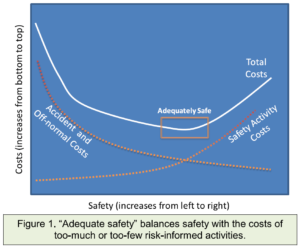Advanced Small Modular Reactors (SMRs) are a key part of the Department of Energy’s (DOEs) goal to develop safe, clean, and affordable nuclear power options.
A key area of the SMR Probabilistic Risk Assessment (PRA) use is in the development of methodologies and tools that will be used to predict the safety, security, safeguards, performance, and deployment viability of SMR systems starting in the design process through the operation phase. Development and implementation of SMR-focused safety assessment methods may require new analytic methods or adaptation of traditional methods to the advanced design and operational features of SMRs. The development of SMR-specific safety models for margin determination will provide a safety case that describes potential accidents, design options (including postulated controls), and supports licensing activities by providing a technical basis for the safety envelope. Any advanced risk-informed decision support approach will rely on a variety of probabilistic and mechanistic information. The safety, security, and economic drivers will need to be integrated in order to determine the effectiveness of proposed mitigation strategies. We will need to be able to manage all (important) hazards for all (important) scenarios when the facility is in operation. An effective risk-informed management approach is one that balances cost with safety as illustrated in Figure 1.

The advanced SMRs currently under development in the United States represent a variety of sizes, technology options, capabilities, and deployment scenarios. These advanced reactors envisioned to vary in size from tens of megawatts up to hundreds of megawatts, can be used for power generation, process heat, desalination, or other industrial uses. SMR designs may employ light water as a coolant or other non-light water coolants such as gas, liquid metal, or molten salt. Advanced SMRs offer many advantages, such as relatively small physical footprints, reduced capital investment, the ability to be sited in locations not possible for larger nuclear plants, and provisions for incremental power additions. SMRs also offer distinct safeguards, security, and nonproliferation advantages.

